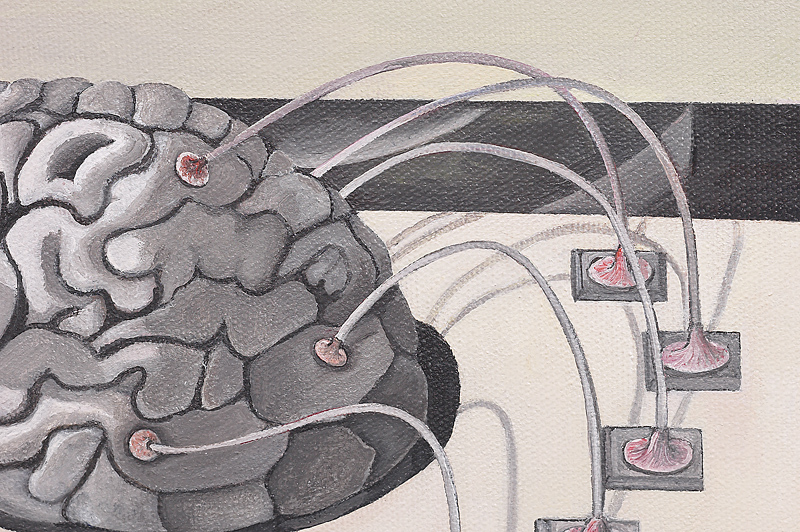
WEDNESDAY, Jan. 16 (HealthDay News) — Former NFL players who had concussions during their career could be more likely to experience depression later in life, and athletes who racked up a lot of these head injuries could be at even higher risk, two new studies contend.
The findings are especially timely following a report last week that a brain autopsy of former NFL player Junior Seau, who committed suicide last May, revealed signs of chronic traumatic encephalopathy, likely due to multiple hits to the head. The disorder — characterized by impulsivity, depression and erratic behavior — is only diagnosed after death.
The first of the two studies of retired athletes found that the more concussions that players reported suffering, the more likely they were to have depressive symptoms, most commonly fatigue and lack of sex drive.
The second study, involving many of the same athletes, used brain imaging to identify areas that could be involved with these symptoms, and found extensive white matter damage among former players with depression.
The research, released on Jan. 16, will be presented in March at the American Academy of Neurology meeting in San Diego.
“We were very surprised to see that many of the athletes had high amounts of depressive symptoms,” said Nyaz Didehbani, a research psychologist at the Center for BrainHealth at the University of Texas at Dallas and lead author of the first study.
The study included 34 retired NFL players, as well as 29 healthy men who did not play football. The men’s average age was about 60. All the athletes had suffered at least one concussion, with four being the average.
The researchers excluded athletes who showed signs of mental impairment such as memory problems because they wanted to study depression alone, Didehbani said.
Overall, the former players in the study had more depressive symptoms than the other participants, and the athletes who had more symptoms had also suffered more concussions.
“The profile of these [depressed] athletes seems to be a little different than the average population that has depression,” Didehbani said. Instead of the sad and pessimistic feelings that are often associated with depression, the athletes tend to experience symptoms such as fatigue, lack of sex drive and sleep changes.
“Most of the athletes did not realize that those kinds of symptoms were related to depression because, I think, they associated them with the physical pain from playing professional football,” she explained. The doctors who treat former football players should let them know that fatigue and sleep problems could be symptoms of depression, she added.
“One good thing is that depression is a treatable illness,” Didehbani said. Many athletes with depression with whom Didehbani and her colleagues have worked are benefiting from antidepressants and psychological services, she said.
However, it is not clear from the study whether the concussions were the cause of the depression or if other factors could be to blame.
“It’s so hard to say because the injuries were over 20 years ago,” Didehbani said. Aging and the transition from the NFL to a new career could also be involved in the athletes developing depression, she added.
Dr. Ann McKee, co-director of the Center for the Study of Traumatic Encephalopathy at Boston University, said, “It wouldn’t surprise me that concussions or brain trauma in general were associated with depression.”
However, knowing how many years and which positions the athletes in this study played, instead of just the number of concussions they remember having, would give a better idea of how much head trauma they actually endured, McKee said. “Asking an individual to recall how many concussions they had is notoriously unreliable,” she added.
In a second study, the Texas researchers performed advanced MRI-based imaging on the brains of 26 of the athletes. Five of the athletes had been found to have depression.
Retired players who had the most depressive symptoms also had the most extensive damage to their white matter, which is the part of the brain that makes connections with the gray matter.
“These changes argue that depression is not just psychological because athletes are not playing their sport anymore,” said study author Dr. Kyle Womack, an assistant professor of neurology and psychiatry at the University of Texas Southwestern Medical Center.
One white matter area in particular, which lies in the middle of the very front part of the brain, had structural changes in all of the athletes with depression, Womack said.
It would make sense that this area, which is involved in motivation and behavioral control and has been implicated in depression before, would be vulnerable to head collisions and trauma, he explained.
For her part, McKee said that identifying regions of the brain that are associated with depression could help doctors detect and treat early changes in athletes.
Blood and urine tests are also being developed to help determine immediately after an injury whether a player suffered a concussion, and make sure athletes only return to play after their brains have healed, McKee said.
The data in these two studies are considered preliminary until they have been published in a peer-reviewed medical journal.
More information
To learn more about depression and treatments, visit the U.S. National Institute of Mental Health.

